IBM's “Hi-tech Sunflower” converts light into heat and electricity with an efficiency of 80%
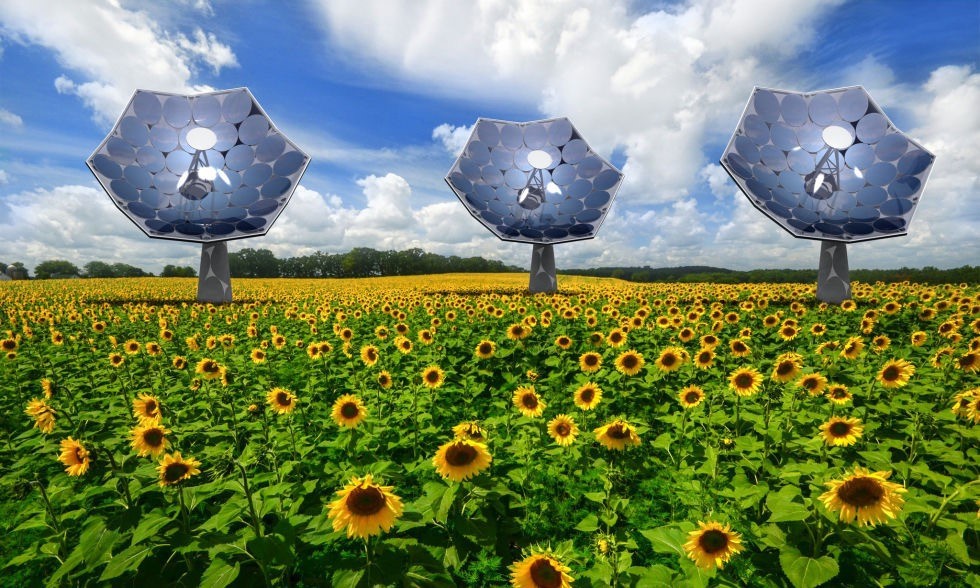
Three companies, IBM (research division from Zurich), Airlight Energy and Dsolar (subsidiary of Airlight), presented a new invention - a system that converts heat and light into electrical energy. Plus, the system also heats the water, so that such a "sunflower" is advantageous to put near residential complexes. The system is called HCPVT (highly efficient concentrated photovoltaic / thermal).
The HCPVT design uses high-efficiency photocells that can convert the focused rays of the reflectors (reflectors) with a high temperature in focus into electricity. Airlight / Dsolar created reflectors for the design, and provided photocells from IBM.
The technologies and elements that are used in the design are well known. A novelty is that HCPVT uses both the thermal method of generating electricity and light (photocells).
Reflectors are curved mirror panels. According to Airlight experts, the ideal material for such panels was aluminum foil. It is an inexpensive material with high reflectivity. Nothing is needed to protect the reflector - the material is quite reliable, although very thin. The “flower” has only six “petals”, each of which consists of six reflectors. At the focal point of the 36 reflectors 6 collectors are concentrated, one for each block of 6 reflectors.
')
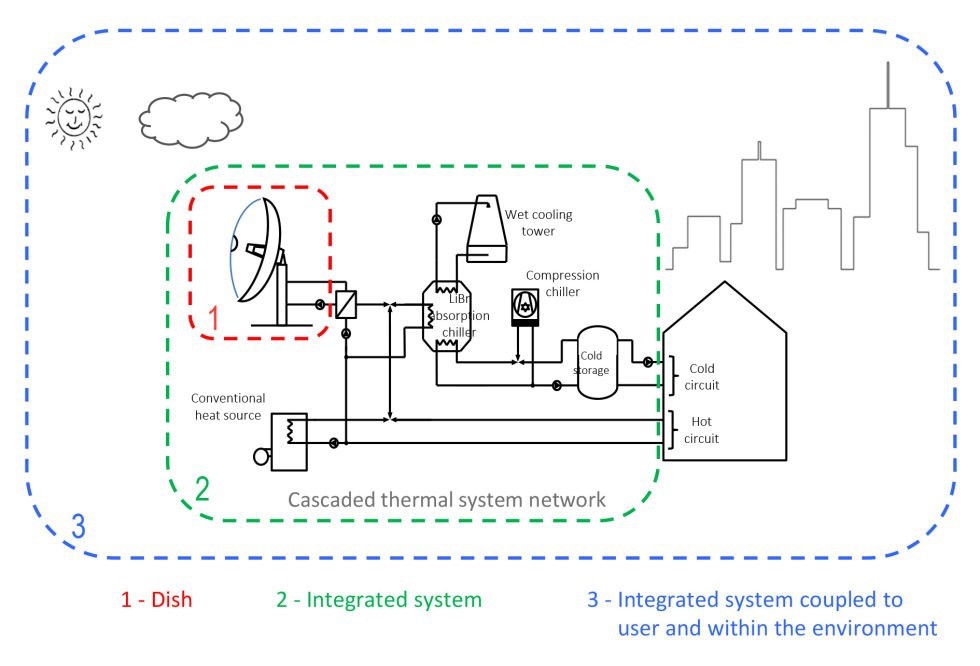
And just as collectors - this is something new. First, each collector is covered with an array of gallium arsenide photovoltaic cells (GaAs). GaAs - converts light into electricity much more efficiently than silicon (38% in this case, instead of 20% for the most advanced silicon photocells). Of course, GaAs is a much more expensive material than silicon. But in HCPVT there is little gallium arsenide - after all, they only need to cover the point on which the sun's rays are focused. On each HCPVT collector, only a few square centimeters are covered with gallium arsenide, and as a result we get one of the world's most efficient photo cells. Each collector generates about 2 kW of energy, in general HCPVT gives approximately 12 kW.
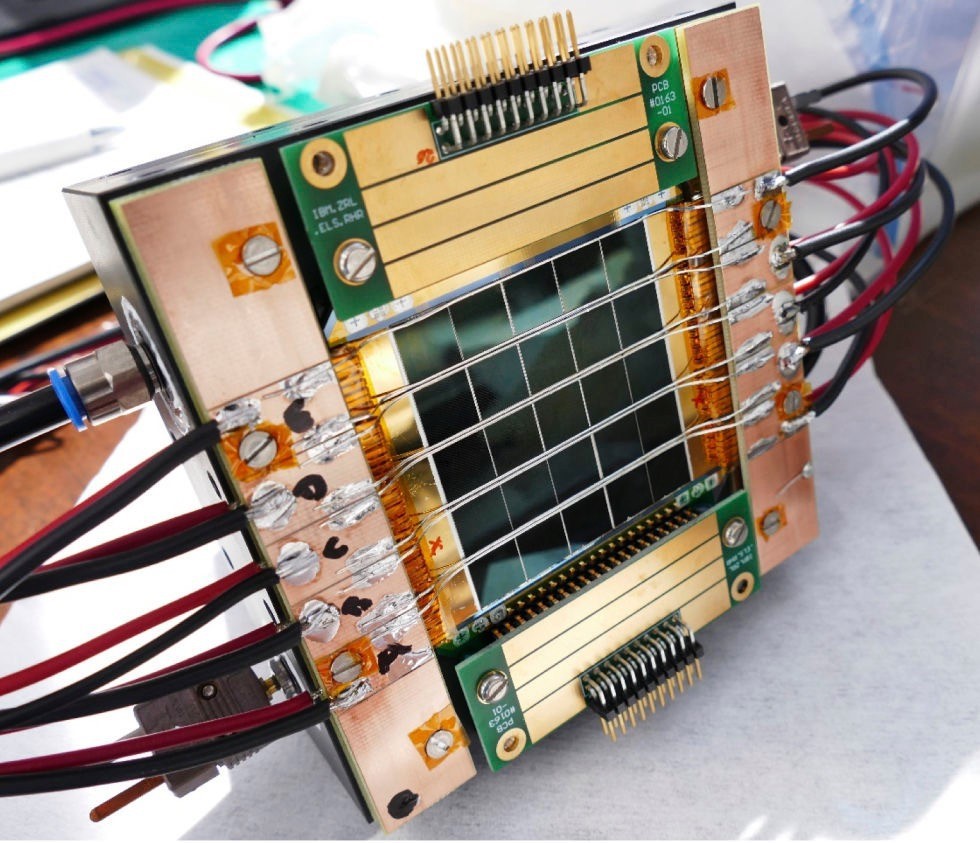
Photocell from IBM with gallium arsenide
Photo cells, like most semiconductors, lose their effectiveness in the heating process. GaAs can work as efficiently as possible at a temperature of about 105 degrees Celsius. But the problem is that if the light is focused by reflectors at one point, then the temperature rises much higher. When conducting tests, scientists melted a hole in the iron plate, focusing the rays on its surface. The temperature rose above one and a half thousand degrees. It is clear that we need some ways to reduce such a high temperature. The problem was solved quite original.

Cool with hot water
IBM engineers began to use a solution that the company is already using to cool supercomputers. Namely - liquid cooling system with hot water. In this case, there are differences - a “water block” was used, which is silicon with microfluidic channels. There are several thousand of such channels, and through them water flows to the heated structural elements. This solution allows to significantly increase the amount of heat that can be dissipated, microchannels in this regard are much more efficient than conventional channels that are used in a standard cooling system.
Such elements are mounted on the back side of the photovoltaic cells, which allows cooling the pads to the required temperature of 105 degrees Celsius. As a result, we obtain a system that produces 12 KW of electricity and 21 KW of thermal energy.
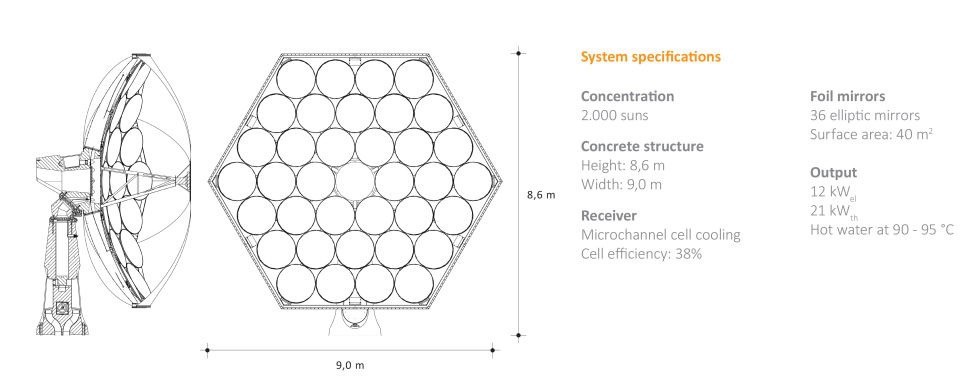
System Specifications
disadvantages
So far, the cost of such a system is tens of thousands of dollars, but this is only a test sample. In the future, the price of "sunflower" will fall, if you adjust their mass production, and very significantly.
In addition, HCPVT can only work with direct sunlight. Otherwise, the system will be ineffective. The "sunflower", however, has a positioning system that sets the reflectors at the right angle. But there is also the problem of clouds. If there are a lot of them, the system will not work properly.
The energy produced by one “sunflower” is enough for 3-4 households, no more, and all this will work only a few hours a day - while the sun is above the horizon. In order to meet the needs of even a small city with the help of such a system, you will need a very large array of HCPVT.
Well, the main problem so far is the cost of "sunflower", and, accordingly, the cost of electricity produced.
However, in the future HCPVT will be improved, and the cost of its creation can be reduced. Such "sunflowers" are quite attractive, and they can be used by individual companies, government facilities, hotels and resorts.
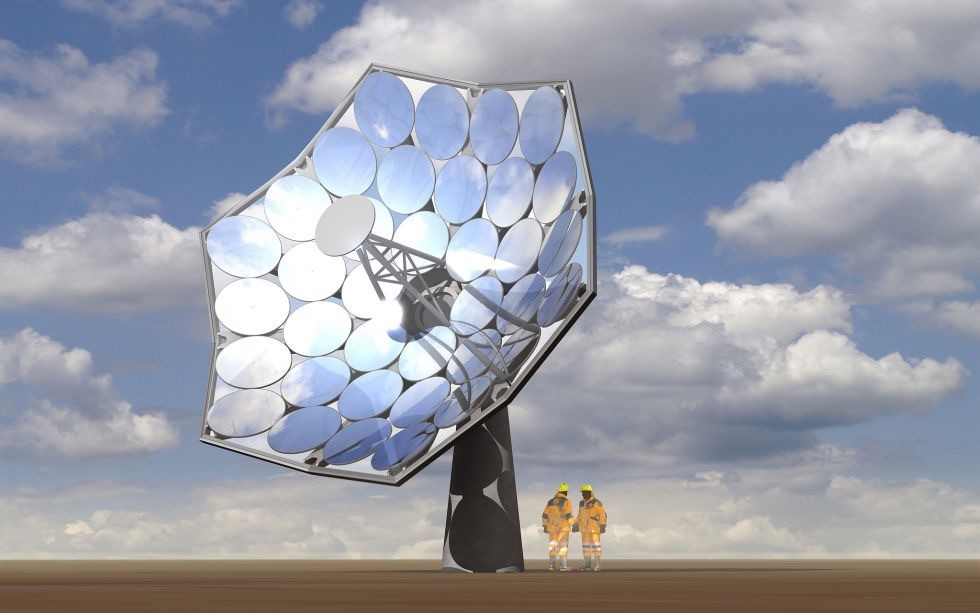
Solar Sunflowers , or HCPVT in 2016, IBM and partners will begin to deliver to potential customers for testing, and their mass production is planned to be organized by 2017. In the photo shown above, the system is presented in full size. This is a working sample, although not the final model.
Source: https://habr.com/ru/post/368181/
All Articles